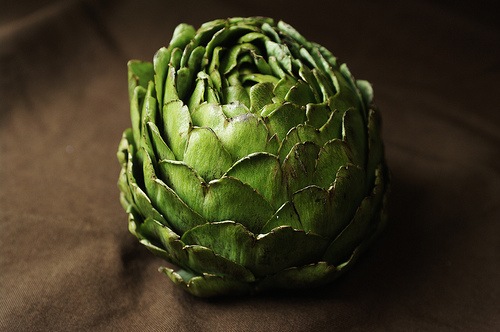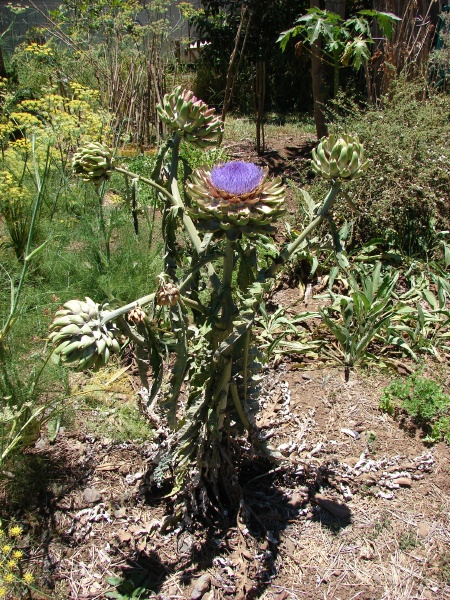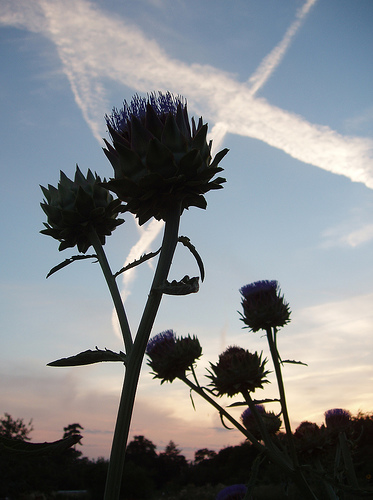Food, Food, Glorious Food!
The Globe Artichoke is able to gain
nutrition through a very important process called
photosynthesis. This process is vital for the survival of the
plant and allows it to create its own food, in the form of
glucose. Because the artichoke prefers to live in soil where the
acidity is neutral, it does not have to overcome any obstacles
in regards to the pH of its environment.
In order for photosynthesis to occur 3 things must be present:
carbon dioxide, water, and sunlight. The artichoke captures
energy from the sunlight through its leaves. The chloroplasts
are responsible for harnessing this energy and starting the
reaction. This energy allows the plant to convert the Carbon
dioxide into sugar known as glucose. Excess sugar is stored as a
substance known as starch. In contrast, we (humans) store excess sugars in
our body as glycogen. This simple process is the only way
the Globe Artichoke is able to provide itself with food.

Although the Globe Artichoke does not need a host to survive, it does provide food for other organisms. Like most other flowering plants, the Globe Artichoke attract their pollinators with bright colored flowers. Many small insects not only get a tasty treat, but also find refuge in the huge flower. Ants have been known to build colonies in mature artichoke heads.
To get a closer look at an ant colony built in a Globe Artichoke click HERE.
Learn more about a similar insect:
East Asian Ant (Polyrhachis lamellidens)
The artichoke uses 2 very important tissues for transport of materials throughout the entirety of its structure. The first of these is called xylem. Xylem's primary function is to transport water throughout the plant. Therefore, it runs from the roots to all other extremities. The water is in essence pulled up through the xylem because of its cohesive and adhesive properties. The key to this system working is the difference in water potential from the inside of the cells at the top of the plant to the xylem near it. The water is able to move into the mesophyll cells at the top of the plant because it is moving to an area of low water potential from an area of high water potential. This action reduces the pressure inside the xylem. The cohesive properties of water do not allow the water column to break inside the xylem. Therefore, there is a continuous chain of water being pulled up the plant.
The second very important tissue is called phloem. Phloem is responsible for the movement of food and nutrients, such as glucose. The exact reasoning on how this structure functions still remains unclear, but there is a hypothesis that seems probable. Sugar is constantly being acquired through photosynthesis, which is where the whole plant gets its food. The sugar enters the phloem in the leaves, where it is formed. It then travels throughout the plant and is simply dropped off as it reaches cells that are in need. This process requires the use of ATP (energy) because the addition of sugar at the origin is not favored by the concentration gradient. Phloem essentially pushes the sugar throughout the plant, versus the pulling action noted for the xylem.
The survival of the artichoke is also dependent on its ability to REPRODUCE.
Back to HOME
Questions? Comments? Don't hesitate to
contact me at
fenske.rach@uwlax.edu!
Site Designed by Rachel Fenske - Last Updated 4.15.11
University of Wisconsin - La
Crosse



